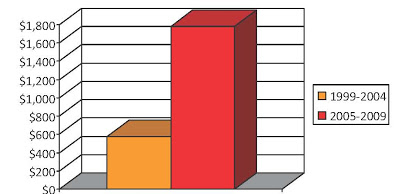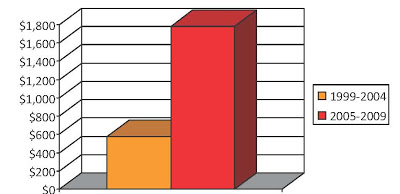by jboullion | Apr 12, 2010 | Uncategorized
From an article in the LaCrosse Tribune:
What do you do after a professional basketball career?
If you’re Will Allen, you found Growing Power Inc., a nonprofit urban farm and food system training center in Milwaukee.
The La Crosse Earth Week Coalition is bringing Allen to La Crosse for a free presentation at 7 p.m. Tuesday in the Graff Main Hall auditorium at the University of Wisconsin-La Crosse. Earlier in the day, Allen will visit the Franklin Elementary School Garden with the after-school program.
He will have dinner at 5 p.m. at the Hillview Greenhouse Life Center.
After a short professional basketball career and a number of years in corporate marketing, Allen returned to his roots as a farmer to found Growing Power, a nonprofit that helps provide equal access to healthy, high-quality, safe and affordable food for people in all communities. . . .
The La Crosse Earth Week Coalition is a group of public, private and nonprofit organizations working together to improve the quality of the environment in the Upper Mississippi River Valley. For more information, go to www.greenlacrosse. com.
by jboullion | Apr 12, 2010 | Uncategorized
From an article in the Wausau Daily Herald:
When Wausau East High School senior Maddy Schwede goes to school in the morning, she almost always glances up.
She’s looking to see if, 155 feet in the air, the giant propeller of the school’s Northwind 100 wind turbine is spinning. If it is, she knows the school is making electricity.
“It definitely catches your eye,” Schwede said.
The wind power generator was installed in October, and a second, smaller turbine soon will be put up. A solar panel that moves with the sun also is producing green energy on the site.
It all will cost about $650,000, mostly funded by grants from the Walter Alexander Foundation and Wisconsin Focus on Energy. Once they’re all running, the three units are expected to save the district more than $14,000 a year on its electricity bills. If so, it’ll take a little more than 46 years for the system to start making money beyond its cost.
But for students, teachers and those who helped make the wind turbine installation a reality, the money part of the project isn’t the point.
Instead, the ultimate hope is that a student will look up at the turbine like Schwede does and will feel a spark of imagination. She’ll learn about alternative energy in an environmental science class, learn about the design of a propeller in a technical education class and learn about the principles involved in producing electricity in a physics class.
And then she’ll go the University of Wisconsin-Madison or the Massachusetts Institute of Technology or another school and learn more. And maybe, just maybe, she’ll design a better turbine or a more effective solar panel that eventually will help make green, sustainable energy production a mainstream endeavor, instead of a niche area.
by jboullion | Apr 9, 2010 | Uncategorized
From an article by Paul Snyder in The Daily Reporter:
A local dispute over a proposed $255 million biomass plant in Rothschild is morphing into a debate over whether the opposition can force a referendum on the project.
“Based on what our attorney’s said, I question the validity of any referendum they would offer,” said Rothschild Village President Neal Torney.
Yet Village Voice, a group organized in opposition to the We Energies project, still wants a special referendum. Paul Schwantes, a member of the group and owner of Wausau-based Sydney Development LLC, said if the village does not agree to a special referendum, he will force one during the November election.
“I need a petition with 330 signatures,” he said. “I can get that.”
We Energies has proposed building the plant on the site of the Domtar Corp. paper mill to produce 50 megawatts of electricity. Torney said the site is zoned for industrial use, so short of approving site plans such as storm water systems and the height of chimney stacks, Rothschild has little room to reject the project if the project complies with local zoning laws.
“I’m almost certain there would be a legal challenge if we did,” said Torney, who added the village is not spending money on the project.
But that does not prevent Village Voice from petitioning for a referendum, said Dale Thorpe, an attorney for Delavan-based Thorpe & Christian SC, which represents municipalities in the state. He said citizens have a right to petition for a referendum if they are unhappy with government expenditure.
Even though the village would not spend money on the project, Thorpe said, the law is broad enough to cover construction projects residents do not want.
“By the same logic,” he said, “it can be used on building, zoning or rezoning approvals or for residents that just want to see a project stopped.”

by jboullion | Apr 7, 2010 | Uncategorized
A commentary by Michael Vickerman, executive director of RENEW Wisconsin:
For Immediate Release
April 7, 2010
For More Information Contact
Michael Vickerman
608.255.4044
mvickerman@renewwisconsin.org
Costs of coal plants keep going up
In recent weeks, some groups have suggested that we maintain our current energy portfolio, continuing to rely heavily on coal-fired generation for a substantial amount of our electricity. These groups claim that gradually moving toward more reliance on local, in-state sources of energy will increase electricity costs. These claims have been thoroughly discredited by two economic studies concluding that electricity bills will decrease with the Clean Energy Jobs Act.
Further, these groups refuse to acknowledge the substantial, ongoing costs associated with coal plants. Since 1999, Wisconsin utilities have spent over $2 billion of customer money keeping old, inefficient coal plants running. For comparison purposes, this sum is nearly triple the utilities’ investment in windpower facilities during the same period. Customers have seen the real and substantial impact of these coal plant costs through rising electricity rates over the past several years. These costs are in addition to the more than $700 million (exclusive of transportation costs) we send out of state each year to pay for the coal to fuel these aging plants. Reliance on dirty, antiquated coal plants leaves Wisconsin in a vulnerable position, unable to predict or control energy costs.
Unlike coal, clean resources like biogas, wind and solar will produce energy throughout their productive lives without requiring costly pollution abatement measures. Going forward, the more renewable energy we add to Wisconsin’s energy resource mix, the less exposed we will be to these downstream liabilities. The avoidance of these regulatory risks is another compelling reason for passing the Clean Energy Jobs Act legislation in this session.
Coal Plant Retrofit Costs (1999-2009)
(in Millions of Dollars)


by jboullion | Apr 7, 2010 | Uncategorized
A commentary by Michael Vickerman, executive director of RENEW Wisconsin:
For Immediate Release
April 7, 2010
For More Information Contact
Michael Vickerman
608.255.4044
mvickerman@renewwisconsin.org
Costs of coal plants keep going up
In recent weeks, some groups have suggested that we maintain our current energy portfolio, continuing to rely heavily on coal-fired generation for a substantial amount of our electricity. These groups claim that gradually moving toward more reliance on local, in-state sources of energy will increase electricity costs. These claims have been thoroughly discredited by two economic studies concluding that electricity bills will decrease with the Clean Energy Jobs Act.
Further, these groups refuse to acknowledge the substantial, ongoing costs associated with coal plants. Since 1999, Wisconsin utilities have spent over $2 billion of customer money keeping old, inefficient coal plants running. For comparison purposes, this sum is nearly triple the utilities’ investment in windpower facilities during the same period. Customers have seen the real and substantial impact of these coal plant costs through rising electricity rates over the past several years. These costs are in addition to the more than $700 million (exclusive of transportation costs) we send out of state each year to pay for the coal to fuel these aging plants. Reliance on dirty, antiquated coal plants leaves Wisconsin in a vulnerable position, unable to predict or control energy costs.
Unlike coal, clean resources like biogas, wind and solar will produce energy throughout their productive lives without requiring costly pollution abatement measures. Going forward, the more renewable energy we add to Wisconsin’s energy resource mix, the less exposed we will be to these downstream liabilities. The avoidance of these regulatory risks is another compelling reason for passing the Clean Energy Jobs Act legislation in this session.
Coal Plant Retrofit Costs (1999-2009)
(in Millions of Dollars)

by jboullion | Apr 7, 2010 | Uncategorized
From an article by Steve Cahalan in the LaCrosse Tribune:
Want to take advantage of the state’s rebate program for energy-efficient appliances? Better buy no later than April 30, officials said.
About half of the money available in the State Energy Efficiency Appliance Rebate Program has been spent, officials said.
Focus on Energy officials also recommend appliance buyers have rebate applications postmarked by May 31 to better qualify.
The state rebate program started Jan. 1 with $5.4 million from the federal American Recovery and Reinvestment Act. It provides rebates for qualifying energy-efficient appliances, including $25 for a dishwasher, $50 for a freezer, $75 for a refrigerator, $100 for a clothes washer and up to $150 for a water heater.
Rebates are available as well for heating and cooling equipment, such as $200 for a furnace and $75 for a central air conditioner; and renewable energy rebates, such as $2,000 for a solar hot water system. Focus officials recommend consumers buy those items by May 15 and have their rebate application postmarked by June 15.
The date recommendations are based on current demand, but the rebate money could be exhausted sooner, said Bobbi Fey, Focus on Energy assistant director of residential programs.
“It’s really first-come, first-served,” Fey said.


